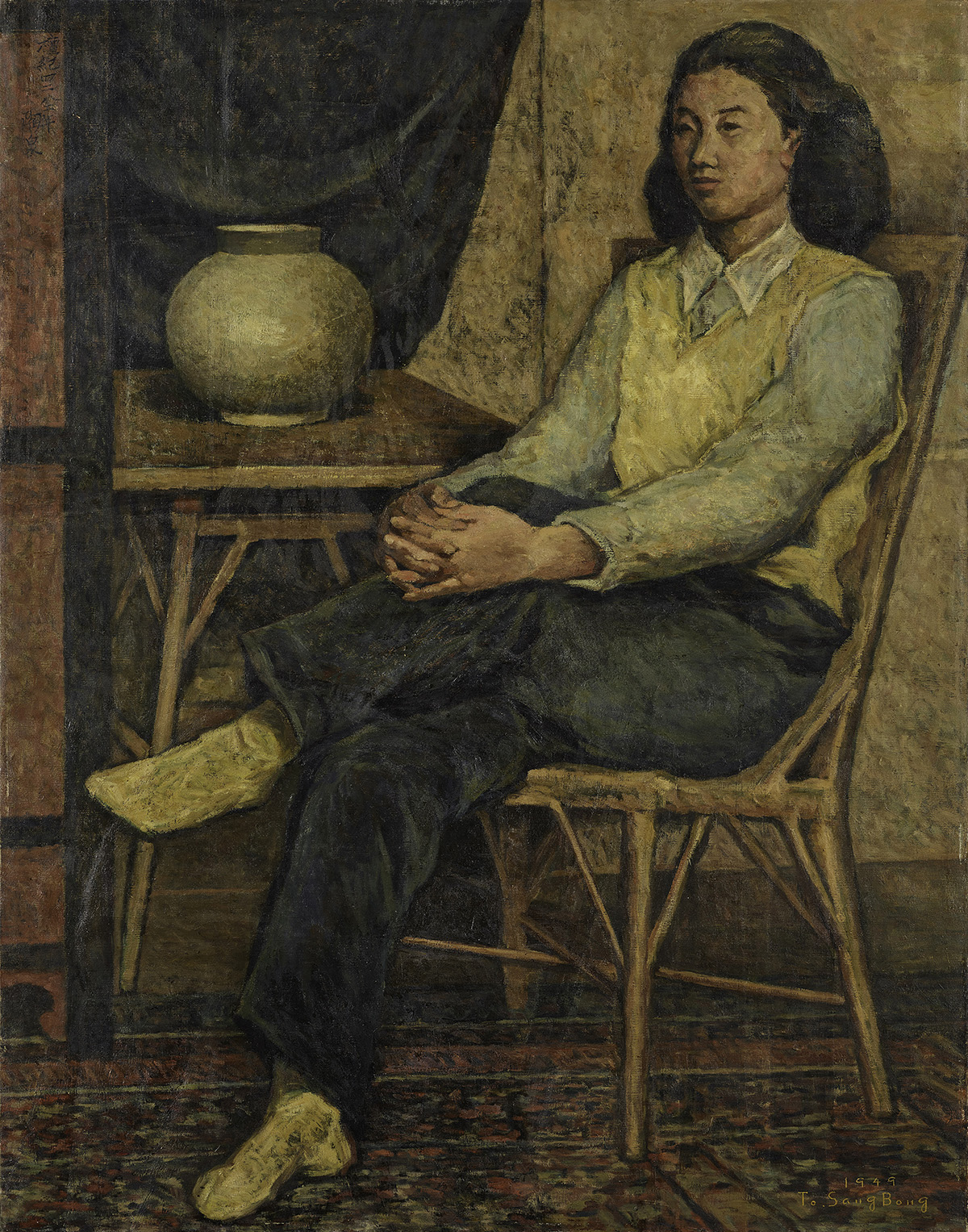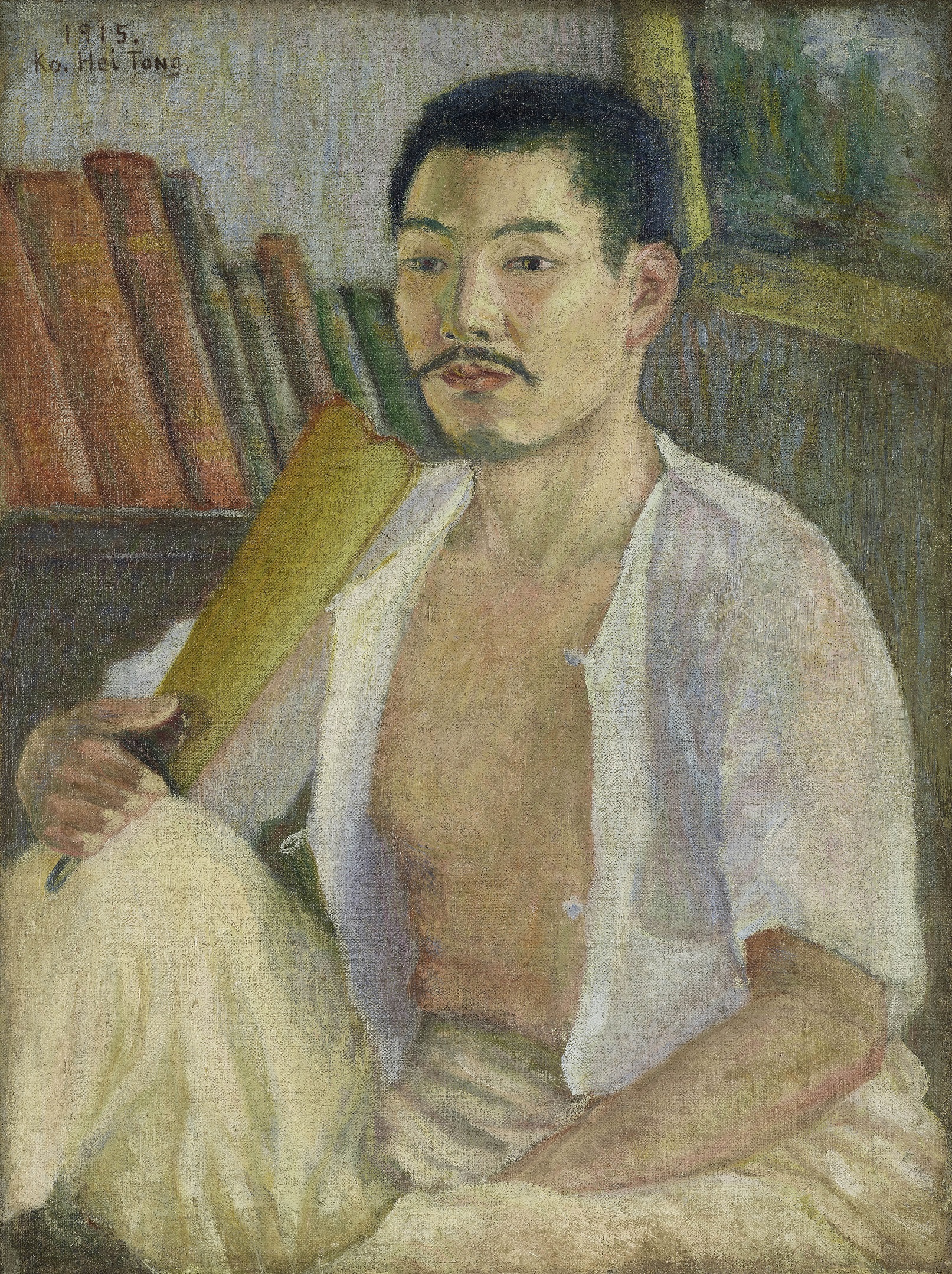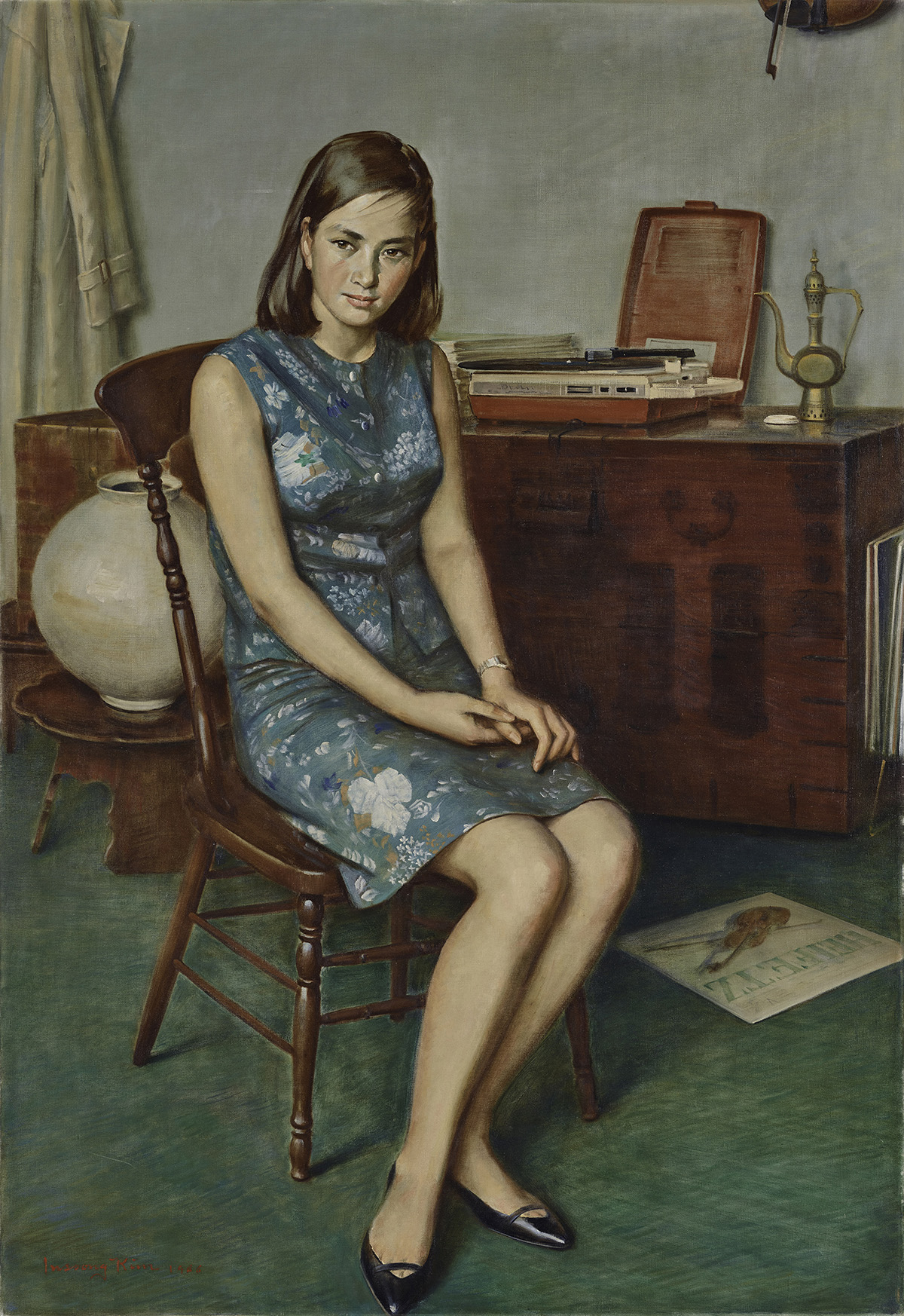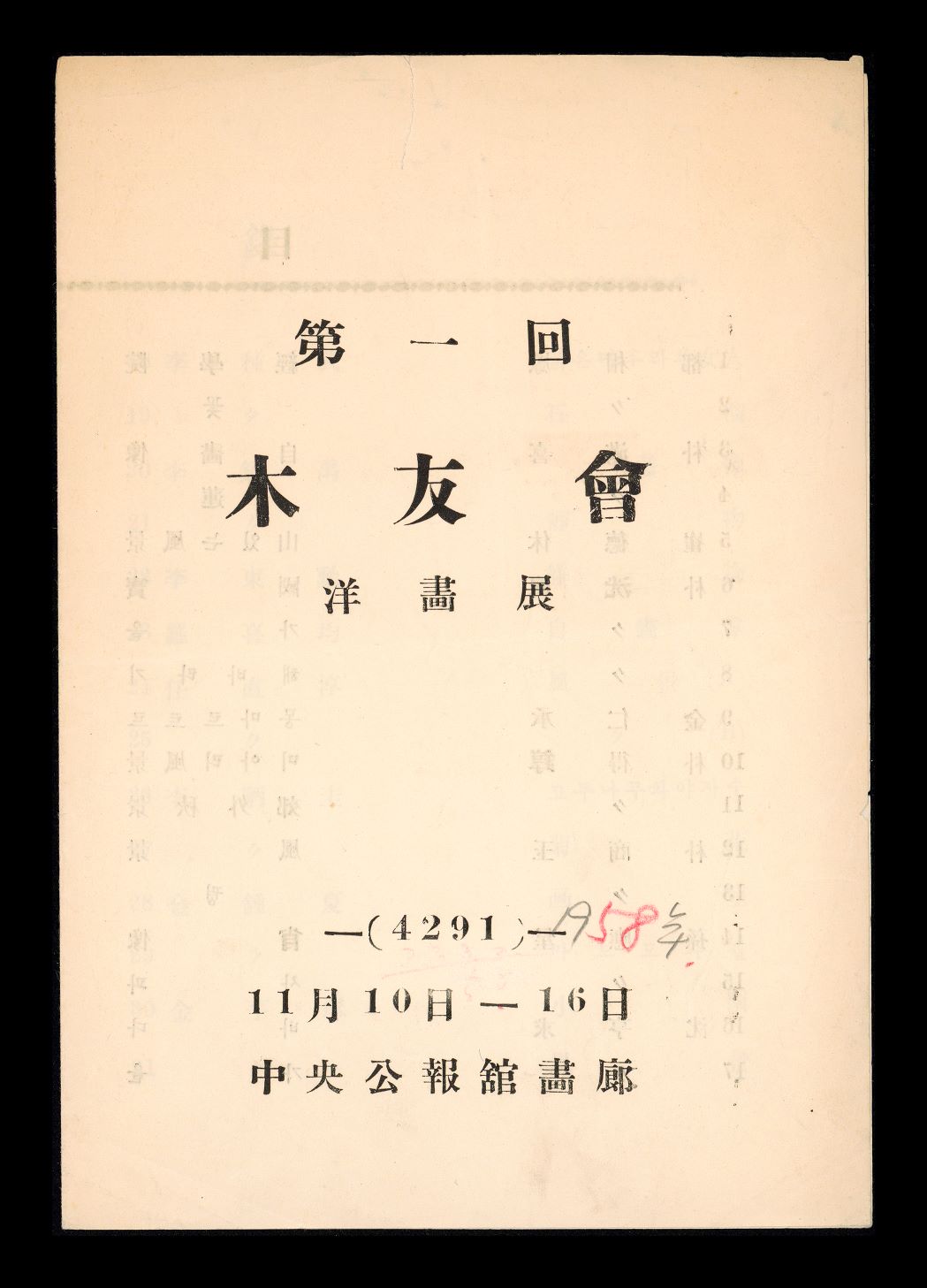
To Sangbong, Stillness, 1949, Oil on canvas, 116×90cm. MMCA collection
To Sangbong
* Source: Multilingual Glossary of Korean Art by Korea Arts Management Service
Related
-

Gu Bonung
Gu Bonung (1906-1953, pen name Seosan) was born in Seoul. He started his education in drawing at Gyeongsin Highschool. He learned sculpture from Kim Bokjin of Goryeo Art Studio [Goryeo misulwon] and then won an award for Self-Portrait at the Sixth Joseon Art Exhibition [Joseon misul jeollamhoe] in 1927. He attended Kawabata University Painting School in 1928 and studied at the Department of Aesthetics at Nihon University before graduating from the Taiheiyo Art School in 1933. He was selected for the Nikakai art exhibition in 1930. After returning to Korea, he participated in minor artists groups and non-govermental art associations, such as Mogilhoe Association and the White Savages Group [Baekmanhoe], instead of applying to the Joseon Art Exhibition. In his essay “Theory: War and Artist” (Maeil Sinbo, 1940.7.9.), he was accused of a Pro-Japanese bias after he encouraged artists to serve the Japanese empire. Immediately after independence, he worked as an editor of fine art in the Ministry of Culture and Education of the U.S. Army Military Government in Korea (USAMGIK) in Korea and was a part-time employee of the Seoul Sinmunsa Newspaper Press in 1949. His paintings illustrated a powerful decadent style based on a dissenting spirit and Fauvist Expressionism. In the mid-1930s, he began focusing on Oriental style oil painting.
-

National Art Exhibition
A government-hosted exhibition held 30 times from 1949 to 1981, also known by the shorter name Gukjeon. Following national independence, the exhibition was the primary means for young and emergent Korean artists to achieve recognition. The influence of the exhibition declined as a result of the emergence of non-figurative art during the 1970s, the increased opportunities for artists to participate in overseas exhibitions, and the rise of private exhibitions and galleries.
-

Ko Huidong
Ko Huidong (1886-1965, pen name Chungok) was born in Seoul and graduated from Hanseong French Language School. He worked as an interpreter and was appointed as a government official of the Korean empire. In 1907, he began to learn painting from An Jungsik and Cho Seokjin. He visited Japan to study art in 1909 and later attended Tokyo School of Fine Arts where he studied oil painting. The advent of Japanese colonization in 1910 caused him to lose his position as a government official and he became a student. He graduated in 1915. A Self-portrait with Jungjakwan (traditional Korean hat for government officials) reflected his self-consciousness of his former role as a government official of the Korean empire. His oil paintings, such as A Self-portrait with Durumagi (traditional Korean overcoat) or A Self-portrait Holding a Fan, are currently owned by the MMCA in Gwacheon. In the 1920s, he stopped creating Western paintings due to the lack of understanding of people around him. After this period, he focused on Eastern paintings depicting subjects such as Geumgangsan Mountain or other nativist landscape themes. He organized the Calligraphy and Painting Association [Seohwa hyeophoe] with An Jungsik, Cho Seokjin, and Lee Doyoung and worked as a secretary of that Association's exhibitions. He was acquainted with numerous other artists and he actively participated in political activism in the modern painter’s circle in Korea. Following the example of his father Ko Yeongcheol, a member of Yukgyo Poetic Gathering [Yukgyo sisa], he also interacted with other artists, such as Oh Sechang. He helped to organise artists as a chair of the Great Korean Art Association [Daehan misul hyeophoe] and later was appointed as a senator. In 1954, He was selected as the first chairman of the National Academy of Arts. His universal significance can be seen in his crucial contribution to the establishment of the first association of Western painting artists and modern artists in Korea.
Find More
-

Kim Insoong
Kim Insoong (1911-2001, pen name Jiyeon) created paintings in the Western Academic manner, using precise lines, realistic forms, and harmonious compositions. He was born in Kaesong in 1911 to a merchant family who traded in ginseng and completed Kawabata Art School in Japan in 1932. He then attended Tokyo School of Fine Arts, and his work, A Naked Woman, won the Changdeokgung Palace grand prize at the Joseon Art Exhibition [Joseon misul jeollamhoe] in 1938. He produced figure paintings of celebrities, landscapes, and historical sites in Korea, in later life focusing on the creation of rose-themed works. In 1945, he actively participated in the foundation of the first art department in Korea at Ewha Womans University. Representative of his balanced academic style are paintings such as Art Studio, which depicts an artist sitting on a chair, and was submitted to the sixteenth Joseon Art Exhibition, or The Melody of Spring (1942).
-

Mokwoohoe
An art association formed in 1958 by figurative artists, To Sangbong, Son Eungsung, Lee Byeonggyu, Lee Chongmoo, and Lee Chongwoo in Deoksugung. The name Mokwoohoe derives from the fact that the group was founded under an old tree. The association was registered as a corporation in 1993 and remains active today.






